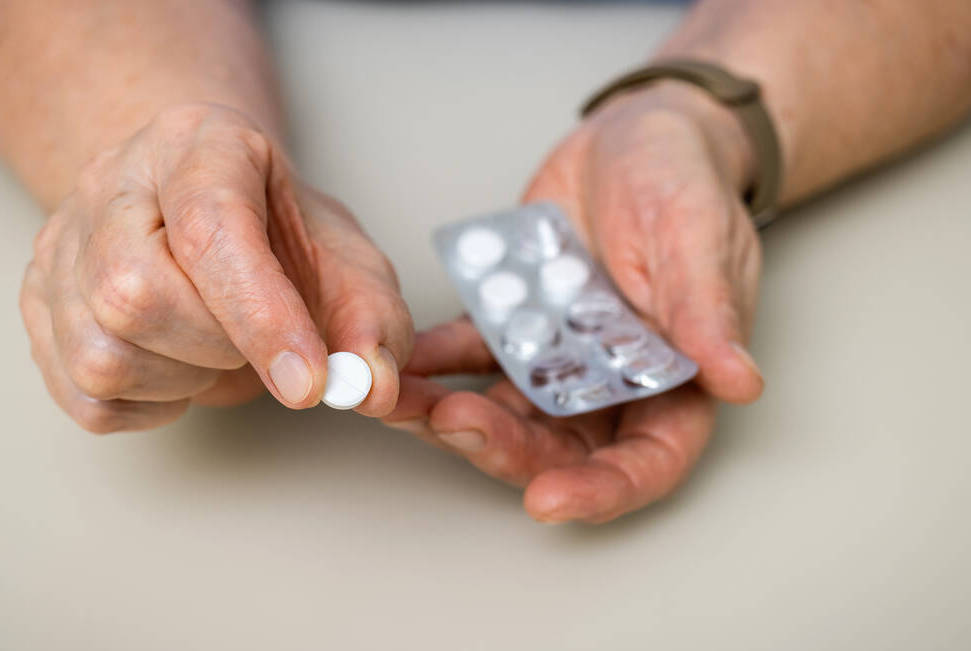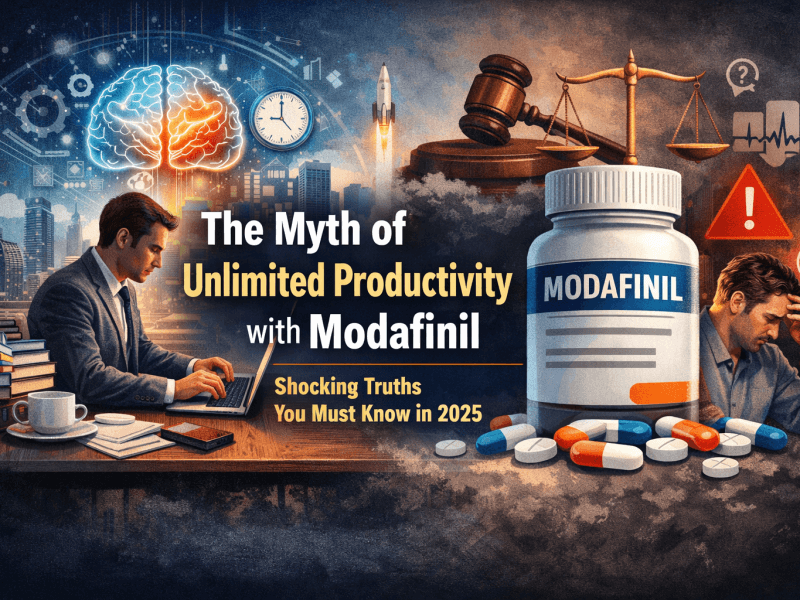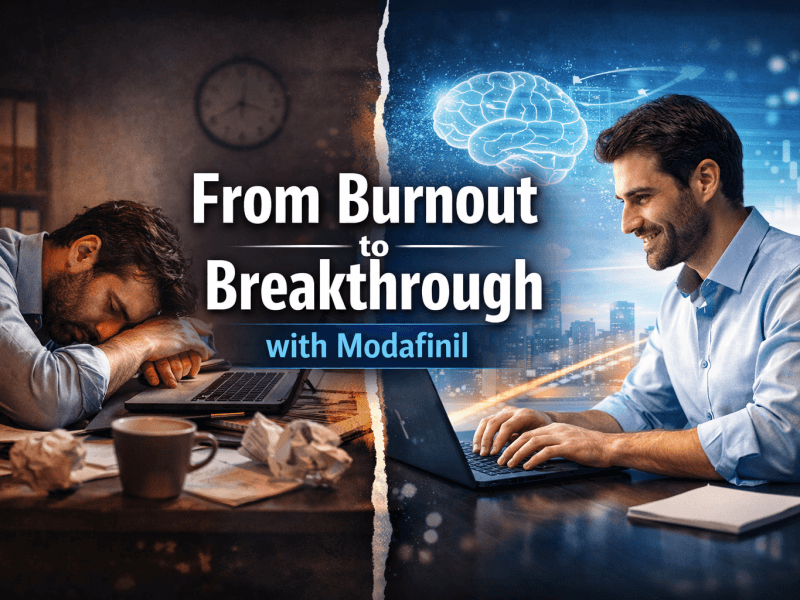Last Updated on 12/09/2025 by James Anderson
Introduction to Modafinil
Modafinil is a prescription drug designed to improve wakefulness in people with sleep disorders like narcolepsy, obstructive sleep apnea (OSA), and shift work sleep disorder (SWSD). Commonly known by brand names like Provigil, it’s also used off-label for enhancing concentration, motivation, and productivity.
But while many hail pill as a “smart drug,” it’s not suitable for everyone. In fact, taking Drug without proper medical oversight can be downright dangerous.
How Modafinil Works in the Brain
Modafinil primarily influences neurotransmitters like dopamine, norepinephrine, and histamine. It keeps users alert by reducing the brain’s ability to feel tired. It’s not a stimulant like amphetamines but has similar alertness-promoting effects hence its appeal among students, entrepreneurs, and professionals.
Still, the way drug affects individual physiology means certain groups should not take it under any circumstances.
Medical Uses of Modafinil
The FDA has approved modafinil for the following conditions:
- Narcolepsy
- Shift Work Sleep Disorder (SWSD)
- Obstructive Sleep Apnea (as adjunctive therapy)
Off-label, it’s been studied for:
- ADHD
- Depression (as adjunct therapy)
- Cognitive enhancement in healthy adults
Despite its varied uses, modafinil comes with clear contraindications that users must understand.
Why You Must Consider Who Should Avoid It
Because modafinil affects the central nervous system and cardiovascular system, it can cause serious side effects especially for those with underlying health issues. Misuse can lead to heart problems, mental health deterioration, or drug dependency.
Let’s break down exactly who should steer clear of pill and why.
Individuals with Heart Conditions
Modafinil can increase heart rate and blood pressure. For those with arrhythmia, prior strokes, or congestive heart failure, this can be a ticking time bomb.
💔 How Modafinil Affects Heart Rate
Modafinil stimulates certain parts of the brain that increase adrenaline. As a result:
- It can raise systolic and diastolic blood pressure
- It may induce palpitations
- It can trigger chest pain in vulnerable individuals
If you have a heart condition, consult your cardiologist before considering modafinil.
People with High Blood Pressure
Even in healthy users, modafinil may slightly raise blood pressure. In hypertensive patients, the risk is amplified. Taking drug with uncontrolled high BP could lead to:
- Hypertensive crisis
- Stroke
- Heart attack
Patients with well-controlled BP may still experience adverse effects, especially with long-term use.
Those with Liver Problems
Modafinil is metabolized in the liver. Individuals with hepatic impairment process the drug more slowly, increasing the risk of overdose or toxicity.
Liver Warning Signs
- Yellowing of the skin or eyes
- Nausea or vomiting
- Abdominal pain
Doctors typically prescribe a lower dose for those with liver impairment but only after a full medical evaluation.
Pregnant or Breastfeeding Women
There’s limited data on modafinil’s safety during pregnancy. However, animal studies and human case reports suggest potential risks:
- Fetal malformations
- Miscarriage
- Low birth weight
Modafinil also passes into breast milk, which may pose unknown risks to infants.
Recommendation: Avoid unless absolutely necessary and approved by an OB/GYN.
Children and Adolescents
Modafinil is not approved for children under 17. Clinical trials have shown higher risks of side effects in minors, including:
- Aggression
- Insomnia
- Appetite suppression
- Skin rashes (some severe)
Long-term developmental effects remain unknown.
People with a History of Mental Illness
Modafinil has been linked to episodes of mania, psychosis, and suicidal ideation in people with pre-existing mental health conditions.
Risk of Psychosis and Mood Instability
Patients with:
- Bipolar disorder
- Schizophrenia
- Severe depression
May experience worsened symptoms when taking modafinil. Close psychiatric monitoring is required if use is medically necessary.
Patients Taking Certain Medications
Modafinil affects liver enzymes that metabolize other drugs. Dangerous drug interactions include:
| Medication Type | Risk |
|---|---|
| Birth control pills | Reduced effectiveness |
| SSRIs/SNRIs | Increased side effects |
| Anticonvulsants | Variable blood levels |
| Benzodiazepines | Reduced sedative effect |
Always disclose all medications before starting modafinil.
People with Sleep Disorders Not Treated by Modafinil
Not all sleep issues are improved by modafinil. For example:
- Insomnia may worsen
- Sleep apnea without CPAP therapy isn’t corrected
- Circadian rhythm disorders may not respond
Using drug as a “quick fix” can mask deeper sleep issues and delay proper treatment.
Individuals with a History of Addiction
Although modafinil has a low potential for abuse, it can be habit-forming especially in people with a history of:
- Cocaine use
- Amphetamine abuse
- Alcoholism
Tolerance and psychological dependence may develop over time.
Those with Severe Anxiety
Some users report increased nervousness, agitation, and panic attacks on modafinil. If you already struggle with anxiety, this drug may make things worse.
Anyone Self-Prescribing Without Medical Advice
Ordering modafinil online without a prescription is risky. You can’t verify:
- Dosage
- Purity
- Safety
Self-diagnosing and treating with modafinil could do far more harm than good.
Potential Side Effects of Modafinil
Even for individuals without contraindications, modafinil can cause side effects. While many tolerate it well, some may experience adverse reactions that range from mild to severe.
Common Side Effects
- Headache
- Nausea
- Dizziness
- Anxiety
- Insomnia
- Dry mouth
Less Common but Serious Effects
- Skin rashes (Stevens-Johnson Syndrome)
- Chest pain
- Mania or hallucinations
- Liver enzyme elevation
If any of these symptoms occur, especially serious ones, discontinue use and seek medical attention immediately.
Tips for Safe Use If Approved by a Doctor
If your doctor determines modafinil is right for you, follow these best practices:
- Start with the lowest effective dose (often 100mg/day).
- Avoid late-day use to prevent insomnia.
- Monitor blood pressure and heart rate regularly.
- Report mood changes immediately to your provider.
- Never mix with alcohol or recreational drugs.
- Don’t rely on modafinil as a substitute for sleep.
Use modafinil as part of a comprehensive wellness plan not a replacement for rest, nutrition, and stress management.
FAQ
1. Can people with anxiety safely take modafinil?
Not always. Modafinil may increase agitation, restlessness, or panic attacks in individuals with moderate to severe anxiety disorders. Use only under close psychiatric supervision.
2. Is modafinil safe for long-term use?
Long-term safety data is limited. Some users report tolerance and reduced effectiveness over time. Regular check-ins with a healthcare provider are essential to evaluate ongoing risk-benefit.
3. Why is modafinil not suitable for children?
Clinical trials in children showed an increased risk of side effects like aggression and insomnia. It’s not FDA-approved for individuals under 17.
4. What should I do if I experience side effects?
Stop taking modafinil and contact your doctor immediately. Common symptoms like headache may pass, but more severe reactions require immediate care.
5. Can I drink coffee while on modafinil?
It’s possible, but be cautious. Both caffeine and modafinil are stimulants. Combining them can cause jitteriness, rapid heart rate, or anxiety.
6. Can modafinil be used to treat depression?
It’s sometimes used off-label to augment antidepressants, but not as a standalone treatment. Individuals with bipolar disorder or psychotic symptoms should avoid it unless under strict medical supervision.
Conclusion
Modafinil has undoubtedly earned its reputation as a powerful cognitive enhancer and wakefulness aid. But it’s not a miracle drug and certainly not for everyone.
From individuals with heart or liver issues to those with mental health histories, certain people face significant risks when using modafinil. Self-prescribing or using it without medical guidance can lead to dangerous complications.
The bottom line? Talk to your doctor. If modafinil is appropriate for you, great. If not, there are safer ways to boost performance like improving sleep, exercise, and nutrition.
‼️ Disclaimer: The information provided in this article about modafinil is intended for informational purposes only and is not a substitute for professional medical consultation or recommendations. The author of the article are not responsible for any errors, omissions, or actions based on the information provided.
References:
- Armodafinil for Treatment of Excessive Sleepiness. ncbi.nlm.nih.gov. 2013
- Modafinil Side Effects. en.wikipedia.org/wiki/Modafinil/ 2023
- Gilleen, J., Michalopoulou, P. G., Reichenberg, A., Drake, R., Wykes, T., Lewis, S. W., & Kapur, S. Modafinil combined with cognitive training is associated with improved learning in healthy volunteers a randomised controlled trial. European Neuropsychopharmacology. 529–539. https://doi.org/10.1016/j.euroneuro.2014.01.001 . 2014
- Greenblatt, K., Adams, N. Modafinil. StatPearls Publishing. https://www.ncbi.nlm.nih.gov/books/NBK531476/ . 2025
- Oliva Ramirez A, Keenan A, Kalau O, Worthington E, Cohen L, Singh S. Prevalence and burden of multiple sclerosis-related fatigue: a systematic literature review. https://doi.org/10.1186/s12883-021-02396-1 . 2021.
- Modafinil (Provigil): Uses, Interactions & Side Effects. clevelandclinic.org. 2023
- Modafinil (Oral Route). mayoclinic.org. 2023
- Provigil (Modafinil): Uses, Dosage, Side Effects, Interactions. rxlist.com. 2020
- Ferraro L, Antonelli T, Tanganelli S, O’Connor WT, Perez de la Mora M, Mendez-Franco J, et al. The vigilance promoting drug modafinil increases extracellular glutamate levels. In the medial preoptic area and the posterior hypothalamus of the conscious rat. Prevention by local GABAA receptor blockade. 1999
- Ishizuka T, Sakamoto Y, Sakurai T, Yamatodani A. Modafinil increases histamine release in the anterior hypothalamus of rats. Neurosci Lett. 2003
- Simon P, Hémet C, Ramassamy C, Costentin J. Non-amphetaminic mechanism of stimulant locomotor effect of modafinil in mice. Eur Neuropsychopharmacol. 1995


